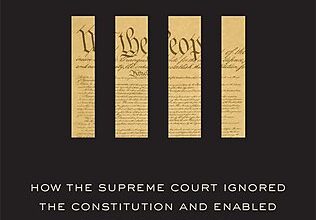Government‐Supported Family Leave Still Entails Tradeoffs

Federal legislation on government‐supported paid family leave has stalled for the time being. But in the meantime, paid leave policies have been adopted by 13 states, most recently Maine, and are being considered by others.
Privately provided paid family leave is a boon to many employees, both male and female. Employers providing paid family leave to employees often constitutes a valuable benefit. However, unforeseen tradeoffs frequently accompany government‐provided family leave benefits.
Because governments around the world have adopted family leave policies, evidence of many of these tradeoffs is already available. And because U.S. state and local governments have implemented government‐supported family leave, domestic evidence is emerging.
Many tradeoffs associated with government‐supported family leave are detailed here. But in recent years, further evidence has come to light. For instance, a Harvard study from earlier this year finds that the introduction of state and federal unpaid family‐leave policies contributed to the stagnation in the rate of gender wage convergence for women in the United States, with “the introduction of family‐leave policies reduced the rate of gender wage convergence by 76%–96%.” The authors calculate that, if it weren’t for these leave policies, wage parity could have been achieved as early as 2017.
They conclude:
“A key lesson from our work is that legally‐mandated labor market flexibility can have the un‐intended effect of stymieing gender wage convergence, notwithstanding the increasing evidence that flexibility which arises endogenously in the labor market through technological innovation, or from firms changing their own policies, can lead to reduced gender wage gaps.”
Although the Harvard study considers the consequences of government‐mandated unpaid family leave, a study of government‐supported paid family leave policy finds similar effects. A study of a three‐month paid family leave expansion in Sweden indicates that the gender wage gap grew in industries with greater exposure to the policy, while promotion, hiring, and starting wages of childbearing‐age women declined following the reform.
Unfortunately, adverse employment effects are not limited to Sweden. A significant study evaluating California’s paid family leave policy likewise finds adverse consequences for mothers’ employment and wages. Under California’s policy, new mothers’ employment fell by seven percent, and annual wage earnings fell by eight percent over 10 years.
Although one of the prominent arguments for government‐supported paid family leave is that paid leave will increase women’s labor force attachment, the California study finds that the policy did not increase mothers’ attachment to their employers.
It is well‐known that higher‐educated, higher‐income women are more likely to have access to paid family leave. Consequently, many advocates argue that government‐supported leave is necessary to ensure coverage for low‐income workers. Less well‐known is that low‐income women are less likely to utilize government‐supported leave and that these policies frequently regressively redistribute from low‐to middle‐ and upper‐income women.
This is partly because payroll taxes generally support paid leave programs. So, low‐income women pay into the program along with other workers but are less likely than other workers to claim benefits. In 2020, the California Budget and Policy Center found that “workers earning between $80,000 and $99,999 annually had a utilization rate that was nearly four times higher than for workers in the lowest wage bracket.” Just 0.6 percent of eligible workers in the lowest wage bracket utilized the benefit.
Similarly, San Francisco has their own city‐wide leave policy, and a 2019 Berkeley paper finds that 79 percent of new moms with household incomes above $97,000 received paid leave benefits from the government, compared with just 36 percent of moms with household incomes under $32,000. This regressive, redistributive effect is not limited to California; a review of New Jersey’s paid leave policy found that low‐income parents were disproportionately less likely to receive paid leave benefits, and as noted elsewhere, research on international paid leave policies is also critical.
Unfortunately, most advocates and many policymakers are not interested in grappling with the costs of government‐supported family leave and are exclusively interested in espousing the benefits. But they should be careful to avoid overselling the benefits of government‐supported leave policies, particularly as it pertains to improving employment outcomes and helping lower‐income women. Building evidence suggests that these policies do quite the opposite.





